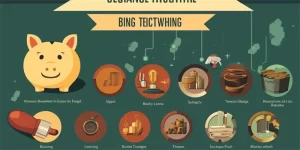YouTube has become one of the largest platforms for content creators to share their videos and engage with a global audience. Many aspiring YouTubers dream of making a living off their channels, but the question remains: do you make money from views or subscribers on YouTube? In this article, we will delve into the various aspects that affect a YouTube creator’s earning potential.

1. Ad Revenue:
One of the primary ways YouTube creators make money is through ad revenue. Advertisements are displayed in videos, and creators receive a portion of the revenue generated when viewers watch or interact with these ads. However, the amount earned depends on factors like the number of views, ad engagement, and the demographic of the viewers.
2. YouTube Partner Program:
Eligible YouTube creators can join the YouTube Partner Program (YPP). This program allows creators to monetize their content and gain access to additional features like merchandise sales and channel memberships. However, meeting certain criteria, such as a minimum number of subscribers and watch hours, is necessary to qualify for the YPP.
3. Sponsorships and Brand Deals:
Successful YouTubers often collaborate with brands for sponsorships and brand deals. These partnerships involve promoting products or services in their videos, and creators receive compensation in return. The amount earned through sponsorships varies based on the creator’s reach, engagement, and the value of the partnership.
4. Affiliate Marketing:
Another source of income for YouTube creators is affiliate marketing. By including affiliate links in their video descriptions or mentioning them in their content, creators can earn a commission when viewers make purchases through those links. The income generated through affiliate marketing depends on the creator’s ability to drive sales and the commission rate offered by the affiliate program.
5. Merchandise Sales:
Many YouTube creators develop their merchandise, such as t-shirts, hoodies, or even branded products. They promote and sell these items through their channels, earning a profit from the sales. The profitability of merchandise sales depends on factors like the creator’s audience size, engagement, and the appeal of the merchandise.
6. Channel Memberships:
YouTube offers a feature called channel memberships, which allows creators to provide exclusive content, badges, or other perks to their loyal subscribers in exchange for a monthly fee. However, the success of channel memberships depends on the creator’s ability to offer valuable content that attracts subscribers willing to pay for the exclusive benefits.
7. Crowdfunding and Donations:
Some YouTube creators rely on the support of their dedicated fans through crowdfunding platforms like Patreon or direct donations via platforms like PayPal. This revenue stream is dependent on the creator’s ability to engage and build a strong fan base who is willing to contribute financially.
8. Content Licensing:
Certain YouTube creators may opt to license their content to third parties, allowing those parties to use and distribute their videos for a fee. However, the profitability of content licensing varies widely and is dependent on factors like the creator’s niche, the demand for their content, and the terms of the licensing agreements.
9. Public Speaking and Brand Collaborations:
Successful YouTube creators might also receive opportunities for public speaking engagements or collaborations with other brands beyond their YouTube channels. These ventures can provide additional sources of income, but they are often dependent on the creator’s influence and reputation within their field.
10. Content Diversification:
Creators can expand their earning potential by diversifying their content across different platforms such as Instagram, TikTok, or Twitch. By building a strong presence on multiple platforms, creators can attract a larger audience and explore various revenue streams available on those platforms.
11. Geographic Location:
The location of the creator can impact their earning potential due to regional differences in ad rates, sponsorships, and market demand. Creators based in regions with a higher cost of living or where the YouTube market is more competitive may face greater challenges in maximizing their earnings.
12. Engagement and Audience Retention:
The level of engagement and audience retention on a creator’s channel plays a crucial role in their earning potential. Higher engagement and longer watch times signal to advertisers and sponsors that the creator has an active and dedicated audience, making their channel more desirable for partnerships.
13. Video Content Quality:
The production value and quality of a creator’s videos can impact their earning potential. High-quality videos that feature compelling visuals, engaging storytelling, and professional editing are more likely to attract viewers, increase watch times, and attract higher-paying advertisements and partnerships.
14. Niche and Target Audience:
The niche a creator focuses on and the target audience they cater to can impact their earning potential. Niches with higher demand or advertisers willing to pay more for specific demographics can lead to higher revenues for creators in those areas.
15. YouTube Algorithm and Trends:
The YouTube algorithm and trends play a significant role in a creator’s earning potential. Creators who understand and adapt to the algorithm’s preferences and capitalize on emerging trends are more likely to attract a larger audience, higher view counts, and, subsequently, increased earning opportunities.
In conclusion, YouTube creators can generate income through various avenues, including ad revenue, sponsorships, merchandise sales, and affiliate marketing. However, the amount earned is influenced by factors such as the number of views, engagement, subscriber count, content quality, geographic location, and the ability to diversify revenue sources. To succeed, creators must continuously adapt and meet the evolving demands of the platform and their audience.
References:
1. Forbes: “How Much do YouTubers Make?” – www.forbes.com
2. YouTube Help: “Join the YouTube Partner Program” – support.google.com/youtube
About the Author:
John Smith is a digital marketing expert with a keen interest in YouTube and content creation. With several years of experience in the industry, he shares his knowledge through informative articles and engaging videos. The author’s original image is featured as the article’s thumbnail.








